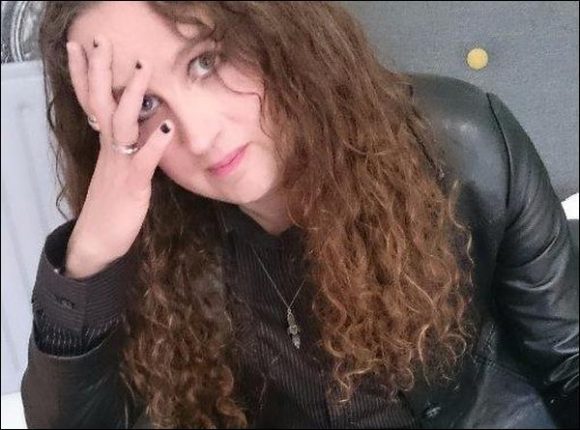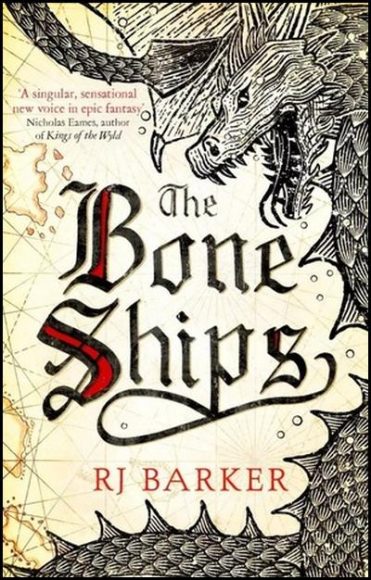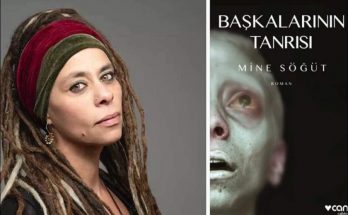Joron Twiner was raised a fisherman, but after seeing his father splattered between two boats and then drunkenly skewers a dickhead noble, Joron is sentenced to captain a black ship, the Tide Child. It is a ship made of older and lower quality bone, one that receives no sacrifice when it is launched. The position is considered to have no honour and the crew’s only responsibility is to die in battle.
Joron is a not a very good captain. He pretty much defaulted into the position in the first place, and subsequently reached an easy truce with the men and women who live aboard his ship. They are never to ask or expect anything of each other and that way none of them will be disappointed. It’s a shit way to run a ship, so it is fortunate he is challenged for the position by a highly skilled but publicly disgraced Seawife known as Lucky Meas. It is also fortunate that Joron is up for the challenge placed before him and, discovering a long dormant shred of pride he begins the journey to live up to the dreams his father held for him.
Interview with R.J. Barker
The pitch for R.J. Barker’s The Bone Ships is simple—fantasy pirates, sailing on ships made out of dragon’s bones. But there’s a lot more going on under the surface (sorry). We talked to Barker about the inspirations for his seafaring world, questionable taxidermy and why the matriarchal society of The Hundred Isles isn’t exactly a utopia.
At times The Bone Ships reminded me of a grown-up, fantastical Treasure Island or one of Patrick O’Brian’s Aubrey-Maturin series. Where did you draw inspiration for The Bone Ships?
Treasure Island is definitely a really early influence, so is C.S. Forester with the Hornblower books. Then later on I drifted away, got distracted by other things, as I do, and Robin Hobb’s Liveship traders put me back on the path to the sea (so it was a huge thrill when Robin described The Bone Ships as “brilliant”). From there I discovered Patrick O’Brian and I fell in love with the world of Captain Aubrey and Dr. Maturin. I’ve also always loved the sea. It’s something I can watch for hours and never get bored, the constant shifting of it, the sheer size, the way it dwarfs us. We think we are the masters of the planet but every so often the sea rises up and shows us we are no such thing.
Where did you get the idea for ships made of dragons’ bones?
I’m kind of known for, maybe, being a bit odd, but I always think the way I get to these things is really logical. I wanted to write about ships but in a fantasy world, so I thought about what I could take away from our world that would make me go about it slightly differently.
The first thing that sprung to mind was trees. Then you need a different material to build from, and bone was often used for tools by neolithic societies and it was also popular among sailors for doing scrimshaw (bone carving). So bone made sense in that way but, obviously, if you’re going to build a ship they have to be big bones, so from there you get to dragons—though I think if you were a dragon pedant, you might take issue with me describing the arakeesians as dragons. I tend to think of them as more akin to kaiju but dragons is an easy shorthand.
Will we get to see more of the Gaunt Islanders? I feel like we got a small window into how different their society is from that of the Hundred Isles, but they still seem like such a mystery.
Yes! But not immediately. I’m writing book three now and large parts of that will take place within the Gaunt Islands, so we’ll get to see their society and I’m really looking forward to writing that. One of my problems as a writer is I get bored really quickly and taking things to a new place is an easy way of refreshing things and rediscoveirng my excitement. So we’ll definitely get to see the Gaunt Islanders because it allows me to invent more things, and I like to invent things.
Other than for control of ships, why is the war even being fought? Will we ever know? (And do the countries even really remember?)
I’ve no great plans to explain the beginnings of the war because I don’t think it’s needed for the story the books are telling. When I write, I tend to keep it quite close to the character’s point of view—so we can only ever really know what they know and, as you said, they don’t know. It’s just what they do.
I always hope when people read what I do they don’t go away thinking that violence is cool. The violence in the Scattered Archipelago* is essentially pointless, it’s a waste of life. As is the story in the book in many ways, they’re sent out to hunt this magnificent creature, and for what? So people can go on killing each other for reasons they don’t even understand. Part of Joron’s growth through the book is that he begins to see his society in a different way and understand that maybe, very fundamentally, something is wrong. That is the first time I have EVER spelled “archipelago” right the first time. Go me.
One of the most interesting (and maybe most disturbing) parts of Hundred Isles culture is the interplay between childbirth, religion and political and naval power. Why did you choose to center the power structures of this society around birth?
I don’t know where the first thought came from. But often, historically, our societies have hidden women away because the ability to have children is precious and hugely important. And of course there’s the wish for men to ensure that a child is theirs, that their genetic line is continuing. But the flipside of anything being valuable is it gives you power, and in this world to have healthy children is very rare, and it’s definitely more important than continuing someone’s genetic line. And since that line is matriarchal it doesn’t really matter who the father is (it’s never said but definitely implied that women have multiple lovers), so it seemed like a steady base to set a society up on. Then once you have that reasoning set up, everything comes after—their religion paints men as flawed and gives them reasons for men to never be in control. So women are put in positions of power, and it becomes a self-fulfilling prophecy.
One of the reasons for flipping a society is to make people look at ours again. Putting women in charge doesn’t magically make everything great in the Hundred Isles, because women aren’t some bizarre other species. People are people. You set up these things and go “look, everything is different,” and then you use that to show that our fundamental flaws, the things that cause the darkness in our world, are the same. Greed, pride, the lust for power. The Hundred Isles are a terrible place, but it’s normal for the people that live in it, and it’s only when they are forced to look at it, and to some degree be outside it, that they begin to want change.
The more I think about the Gullaime, the more questions I have. How did they end up enslaved? Are there any out there who aren’t? And what exactly is a Windspire, really?
Aha! So many questions I cannot answer without ruining the next two books. . . I think (hope) people will be as interested in the Gullaime as you are, and we will definitely find out a lot more about them and their society. The Gullaime (who three books down the line, I am kind of wishing I had given a name to) has an ever growing part to play. I love writing him/it, there’s something very mischievous and yet innocent about the Gullaime. And his/its relationship with Joron is probably one of my favourite things.
The world of The Bone Ships feels both enormous because of the sheer volume of islands, and hemmed in because of the great storms raging at the edge of the map. Why did you choose to have the storms there as a sort of “edge of the world”? And have they always been there?
They have always been there, because it was one of the first things I thought of when this idea was playing about inside my head. A lot of things fell by the wayside but the storms stayed. I just really like that idea. In a lot of old maps you have this thing where for the people drawing them, or looking at them, the world just ends because they don’t know what exists past the edges of their map. I really liked that idea of creating a world that actually does have hard and impassable borders, and I didn’t want walls or mountains. Storms seemed fitting for these people and this place. As far as the people of the Scattered Archipelago know they have always been there, yes. But, as I said, we only know what they know. . .
In your bio, you mention a collection of “questionable taxidermy.” Where did that come from? And is there a difference between proper and questionable taxidermy?
When my wife and I got married, we bought ourselves this fox head we’d seen in a shop. It had been there for years and years, and it had just been there moldering away because it didn’t look very good, and we felt kind of sorry for it. We really like things that maybe other people wouldn’t love. There’s a fashion for ‘bad’ taxidermy at the moment but we’re not really part of that. I can’t really explain what it is we like about a thing, just that we have no interest in some lovingly stuffed hunting trophy. We like the things that maybe wouldn’t find a home anywhere else. They’re not quite right, but someone meant well, and we love these things for it. They have to be old too. Rather than collecting odd taxidermy, I like to think of us as more of a home for retired taxidermy. Taxidermy that’s got a bit eccentric in its dotage.
Views: 336





